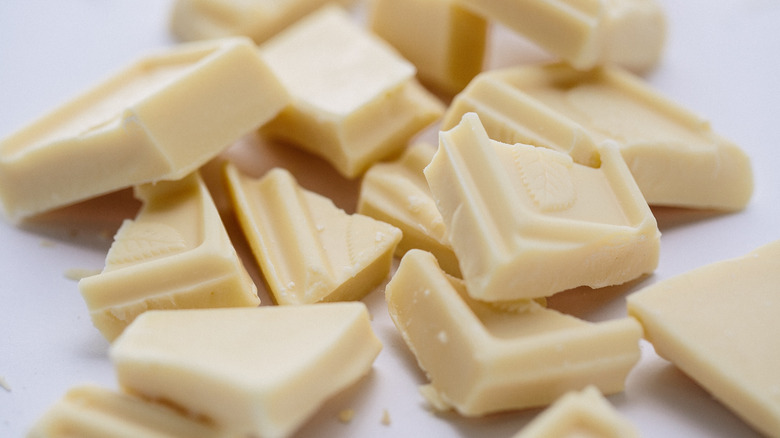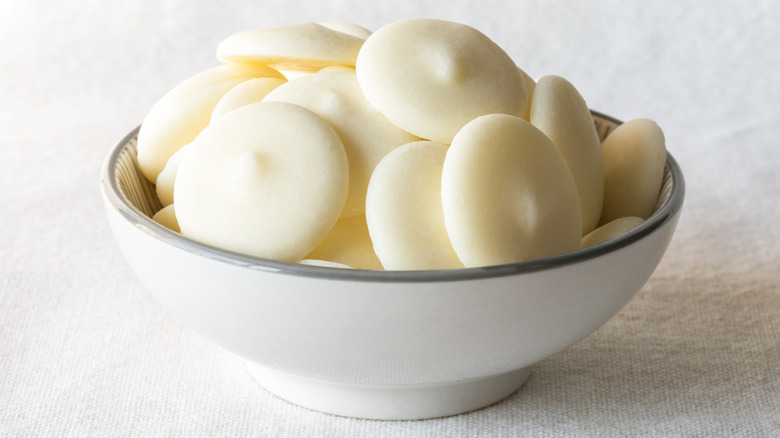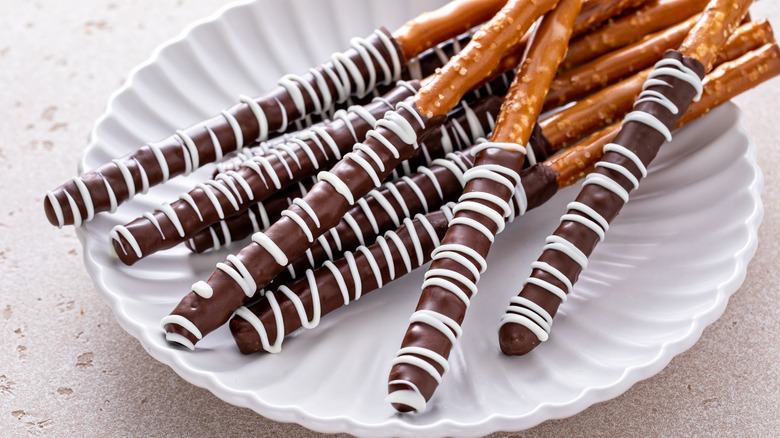Almond Bark Vs White Chocolate: What's The Difference?
At first glance, almond bark and white chocolate look relatively indistinguishable. However, each has a unique formulation and taste. Almond bark features vegetable and other hydrogenated oils as its fat. These oils are combined with sugar and flavoring agents to create a sugary artificial vanilla flavor. You can also find chocolate-flavored almond bark. It's made from the same ingredients, but features different artificial flavors and a touch of cocoa powder to mimic the color of dark chocolate.
Regardless of flavor, the bark almost always comes in bar form, ready for melting. Its specific ingredients lend themselves to melting quickly into a thin, smooth consistency and vibrant white or dark brown color. Since it contains no cocoa butter, it does not need tempering before use. You can simply melt it in the microwave in 30-second intervals or follow the instructions on your package to liquefy this confection.
The real deal on white chocolate
White chocolate contains at least 20%cocoa butter blended with sugar and milk solids. It generally tastes sweet and milky with undertones of vanilla and honey. If white chocolate contains too much vegetable or palm oil, it's not "technically" chocolate; instead, it is some sort of candy melt coating. It is often sold as a bar, but you can also find other types (sold in callets or discs), with more cocoa butter aiding in its quality, flavor, and fluidity.
Tempering is necessary when melting to get a consistent finish. Use a heat-safe bowl and pot of water to create a double boiler to slowly melt 3/4 of your chopped portions or discs, stirring until it reaches 110 degrees Fahrenheit. Once it hits this temperature, stir in the final fourth of your solid pieces. Voila! You've got a tempered, deliciously velvety base perfect for making recipes like homemade chocolate bars.
How to use each confection
Almond bark and white chocolate work best for their own specific applications. The bark's easy, quick melting capabilities make it ideal for blanketing items, like cake pops, in a candy-like coating that seamlessly covers the gooey, soft interior. Use almond bark to make dipped Oreos for a cookies and cream flavor explosion, or envelop pretzel rods in this coating to achieve an irresistible sweet and salty combo. (Add some festive sprinkles, candies, or nuts for the ultimate textural finish.)
Rely on white chocolate to produce more gourmet treats in which you want the nuanced flavor notes to shine, like in this superfood matcha white chocolate bark. This way, the subtle buttery and floral notes from the cocoa solids combine with the grassy matcha for a symphony of tastes. Or, use the white chocolate to create delicious coated strawberries, ready for decorating. To skip melting and tempering, fold chopped pieces into your brownies or favorite cookie dough to bite into luxurious pockets of lightly melted goodness. Its creaminess and bright flavor can also balance the bittersweet notes in dark or semi-sweet chocolate-based desserts.



